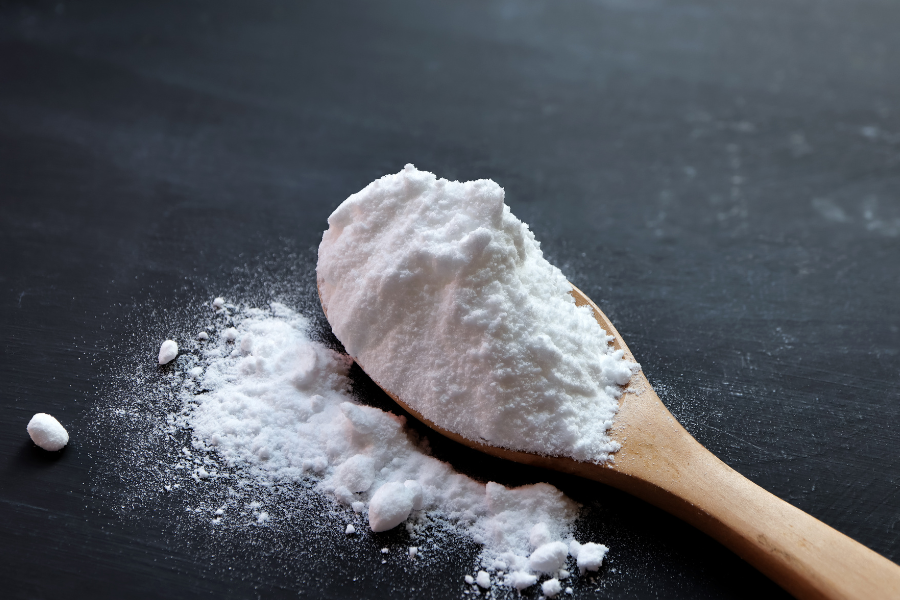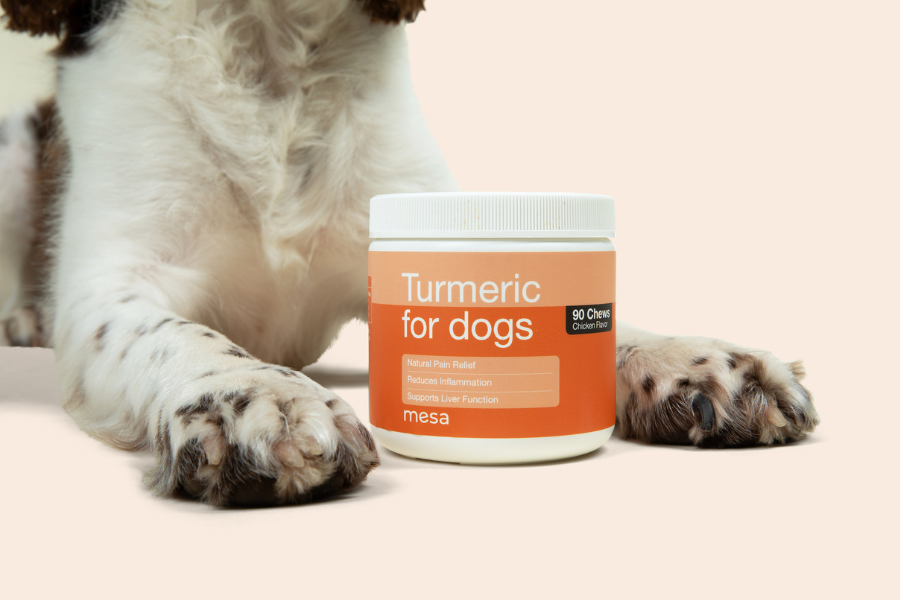Got a scratchy pooch on your hands who's driving you both up the wall? If your bundle of joy has been scratching or licking more than usual, they might be tussling with dermatitis. Yup, it's a thing for dogs too. But hey, don't sweat it. Dermatitis may sound like a big deal, but with a little tender loving care, your doggo will be back to wagging their tail and living their best life in no time.
This little rascal named dermatitis can be a bit of a nuisance, but good news: we've got it under control. Here's your ultimate guide to everything dog dermatitis - what it is, why it happens, all the treatments you can try, and how to stop those annoying flare-ups from happening. Sit back, relax... and let's dive right in!
What is Dog Dermatitis?
Ever wondered, "what on earth is Dog Dermatitis?" Sounds like something fancy, right? Well, it's basically just a fancy term for when your dog's skin is having a bit of a tough time. You know, when it's all red and itchy, and sometimes even kinda scaly. Your furry buddy might be really into scratching, licking, or biting at certain spots. Spotting hot spots, hair loss, or even scabs? Yep, that could mean your dog is dealing with dermatitis.
Let's talk about the different villains that could be behind your pup's skin drama:
• Atopic Dermatitis (Think Allergies): Usually triggered by allergens like pollen, mold, or dust mites. Yep, dogs can have seasonal allergies too!
• Contact Dermatitis (Skin vs. the World): Caused by irritation from certain substances like cleaning products, shampoos, or even plants.
• Flea Allergy Dermatitis (Little Pests, Big Problems): Triggered by allergic reactions to flea bites. Just one bite can set off major discomfort.
• Food Allergy Dermatitis (Dinner Drama): Resulting from sensitivities or allergies to certain proteins or ingredients in your dog’s food.
By figuring out which type of dermatitis is bugging your pup, you'll be one step closer to giving them the relief they need.
Causes of Dog Dermatitis
Dermatitis doesn’t just pop out of nowhere—it usually has a specific cause. Here are the most common culprits:
Allergens
Dust, pollen, mold, and grass… basically the entire outdoors, unfortunately. Allergic dermatitis can flair with the seasons, making spring and late summer a tough time for dogs.
Fleas and Parasites
Fleas are not just annoying; they’re also relentless. One flea can lead to a waterfall of itching if your dog is allergic to flea saliva.
Bad Diet
If your dog is munching on something that doesn’t agree with them, their skin might be the first place you’ll notice the problem. Food-related dermatitis typically stems from proteins (like chicken or beef) or grains.
Skin Irritants
Ever walked barefoot on something itchy? Dogs can experience the same thing when exposed to certain soaps, shampoos, or chemicals.
Underlying Health Issues
Sometimes, dermatitis is tied to larger health conditions like hormonal imbalances or infections.
So, how do we go from scratching to soothing? Step one is figuring out what's causing the itch. Sometimes it's a no-brainer (oh hey, fleas!), but other times it's like being a detective on a mystery case. Often, a trip to the vet is the best way to crack the code. Now, let's talk about how to treat it!
Dealing with Doggy Dermatitis
Every doggy is one-of-a-kind, and this includes how we tackle their dermatitis. Here's the rundown on our tried-and-true game plan:
Tackling Allergens and Calming the Histamine Hype
Alright, so here’s the game plan if allergens are messing with your dog’s vibes (aka causing dermatitis). First, you’ve gotta play detective and figure out what’s triggering the madness. Is it pollen? Dust? That fancy rug they love rolling around on? Pinpointing the allergen is key because once you know the enemy, you can start limiting exposure—game changer, right?
But here’s the kicker—sometimes allergens crank up your dog’s histamine response, and things spiral out of control. Enter supplements that can help balance that chaos. Quercetin can help reduce inflammation and histamine release like a total pro. Colostrum is another superstar, boosting your pup’s immune system and potentially helping them build tolerance to allergens over time. And don’t sleep on probiotics—they can support gut health, which weirdly enough plays a big role in keeping allergies in check. Be sure to get your vet’s thumbs-up before adding supplements, but once you’ve got the green light, these can be game-changing allies for your itchy companion.
Medicated Baths Are Your New Bestie
When it comes to itchy pooches, nothing beats a bath! Opt for shampoos that pack a punch with oatmeal, aloe vera, or hydrocortisone to beat that inflammation. These spa sessions will banish allergens, soothe that sore skin, and leave your dog smelling like roses. But remember, nobody likes a chilly swim so keep it warm and short!
Topical Treatments
There's a whole world of creams, sprays, and ointments out there to soothe that pesky itch and help heal. Stuff with hydrocortisone, chamomile, or tea tree oil are big hits. But remember, before you slather anything on, give your vet a quick call—our furry friends have sensitive skin!
Flick off those Fleas
If we're talking supervillains, fleas are up there. Flea prevention is your secret weapon. Go with something your vet recommends like spot-ons, chewable tablets, or flea collars. And remember, cleanliness is key—get that vacuum going and keep your pooch's bed spotless.
Menu Makeover
If it’s a food allergy, a diet trial could be just the thing. Your vet might suggest an elimination diet to catch the culprit (like beef or grains). Or, how about hypoallergenic dog food designed just for our sensitive pals?
Meds
For those tough cases, your vet might whip out the big guns like antihistamines, steroids, or meds like Apoquel or Cytopoint to cool down the inflammation and control the itch. These treatments offer quick relief, putting the brakes on the itch-scratch cycle.
Protect Those Paws
If your pooch gets contact dermatitis from grass or sawdust, get them some cute booties or paw wax. Plus, they'll look totally adorable in their new accessories!
Revamp Their Hangout Spots
Is your fur baby allergic to pollen or dust mites? Try an air purifier, keep their bed squeaky clean (often), and consider allergy-proof covers for their nap palace.
Can You Prevent Dermatitis? Absolutely!
While it’s impossible to prevent every single flare-up, you can lower your dog’s chances of dealing with dermatitis by staying proactive:
Stick to a Flea Prevention Schedule – Regular treatments can keep those pesky critters away.
Choose High-Quality Food – Avoid fillers and allergens. Look for pet food with simple, wholesome ingredients. And try adding anti-inflammatory foods to your dog's diet.
Groom Regularly – Bathing and brushing frequently removes allergens, dirt, and pests that might irritate your dog’s skin.
Keep Their Environment Clean – Think vacuuming, washing bedding, and keeping their spaces allergen-free.
Use Vet-Approved Products – Whether it’s quercetin, shampoo or flea treatment, always go for products that are safe and veterinarian-recommended.
When to Call the Vet
If your fluffy buddy has been acting a bit off, or those irritating symptoms just won't take a hike no matter how you've tried, it's time to dial your vet's number. Spot an open wound, can't ignore the excess scratching, or your doggo is just too down in the dumps? It might be time to call in the professionals. Your vet's got the power to whip out prescription meds, run a few allergy tests or squash any other sneaky conditions hiding beneath the surface. Trust me on this one, tackling the problem head-on, right from the start... it's a game-changer.
Wrap-Up
Every pupper out there deserves a tail-wagging, tip-top life—far from the itchy bother of dermatitis. With these handy tips in your back pocket, you're prepped to give your little furball the best shot at chilling out and bouncing back. Maybe it's a swanky diet flip, a bit more suds 'n bubbles in the tub, or a helping paw from your trusted vet, there are heaps of paths to keep your doggo comfy and cool.
Dealing with a canine kiddo battling dermatitis? Spill the beans on what worked magic for you or toss out any questions in the comments below—we're all dog ears. Because if there's one thing we're obsessed with (almost as much as our morning java), it's gabbing about our four-legged friends.
FAQs About Dog Dermatitis
Q: How do I know if my dog has dermatitis?
A: Common signs of dermatitis include excessive itching, redness, flaky skin, hair loss, or hot spots. Your pup may also lick, chew, or bite at irritated areas more than usual. If you’re unsure, it’s always a good idea to consult your vet for a proper diagnosis.
Q: Can food allergies cause dermatitis?
A: Absolutely! Some pups are sensitive to certain ingredients in their diet, which can trigger allergic reactions, including skin issues. Switching to a hypoallergenic or limited-ingredient diet (with your vet's guidance) can sometimes make a big difference.
Q: What’s the best way to prevent dermatitis?
A: Prevention is all about staying proactive! Regular grooming, checking for fleas or ticks, feeding a balanced diet, and ensuring your pup has clean bedding are all great ways to keep their skin healthy and itch-free.
Q: Are there natural remedies for dermatitis?
A: Yes! Coconut oil, quercetin, colostrum , probiotics, oatmeal baths, or chamomile tea soaks can sometimes soothe mild skin irritations, but remember—they’re not a substitute for proper vet care if the condition persists or worsens.
References
1) Drechsler Y, Dong C, Clark DE, Kaur G. Canine Atopic Dermatitis: Prevalence, Impact, and Management Strategies. Vet Med (Auckl). 2024 Feb 13;15:15-29. doi: 10.2147/VMRR.S412570. PMID: 38371487; PMCID: PMC10874193.




